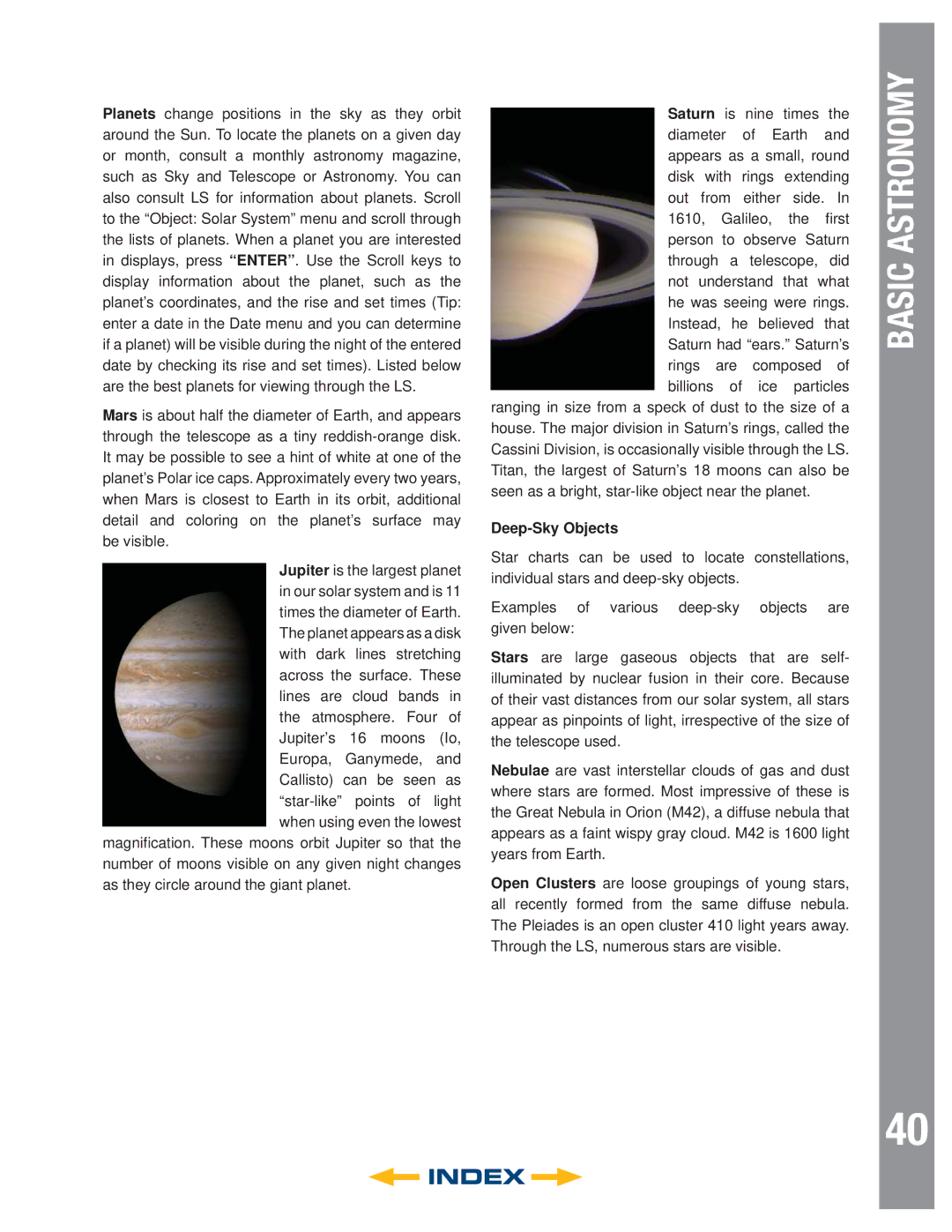6" LS-6 SC, 8" LS-8 ACF, 6" LS-6 ACF, 8" LS-8 SC specifications
The Meade 8" LS-8 SC, 6" LS-6 ACF, 8" LS-8 ACF, and 6" LS-6 SC telescopes represent cutting-edge advancements in amateur astronomy, catering to both novice stargazers and seasoned astronomers alike. Each model incorporates innovative technologies, making it easier than ever to explore the cosmos.The Meade 8" LS-8 SC (Schmidt-Cassegrain) features a compact design with an 8-inch aperture that provides exceptional light-gathering capabilities. This telescope utilizes an advanced computer-controlled system known as the AutoStar II. This technology allows for hassle-free navigation across the night sky. The LS-8 SC comes equipped with a built-in observatory, ensuring a user-friendly experience, allowing beginners to locate and track celestial objects with ease. The telescope's premium optics guarantee sharp, high-contrast images, making it an ideal choice for planetary and deep-sky observation.
Next, the Meade 6" LS-6 ACF (Advanced Coma-Free) delivers superior optical performance with minimal distortion. This design eliminates spherical aberrations, providing exceptionally sharp images across the entire field of view. Featuring a 6-inch aperture, the LS-6 ACF is highly portable and perfect for both visual observations and astrophotography. It includes the AutoStar computer system for easy alignment and tracking, as well as a robust, sturdy mount that enhances stability during viewing sessions.
The 8" LS-8 ACF builds on the strengths of its predecessors with an even larger aperture, ensuring maximum light-gathering potential for serious observers. The improved ACF optics yield crisp images without the common off-axis distortions seen in traditional designs. This telescope is also equipped with hassle-free setup features, allowing users to spend more time observing and less time setting up. The OTA design and mount are tailored for easy transport, making it a favorite for astrophotographers seeking high-quality celestial imagery.
Finally, the Meade 6" LS-6 SC offers a balanced option for those seeking portability without sacrificing optical quality. Like its larger counterpart, the LS-6 SC is designed for ease of use and includes the AutoStar technology for automated tracking. Its compact design and lightweight build make it convenient for travel, while still providing an impressive 6-inch aperture for celestial viewing.
In summary, the Meade 8" LS-8 SC, 6" LS-6 ACF, 8" LS-8 ACF, and 6" LS-6 SC telescopes exemplify the intersection of portability, usability, and advanced optics. Each telescope supports astronomers of all skill levels, making the wonders of the universe accessible to everyone. Whether you're observing planets, nebulae, or star clusters, Meade’s innovative technologies enhance the overall experience, ensuring that the night sky is within reach.

